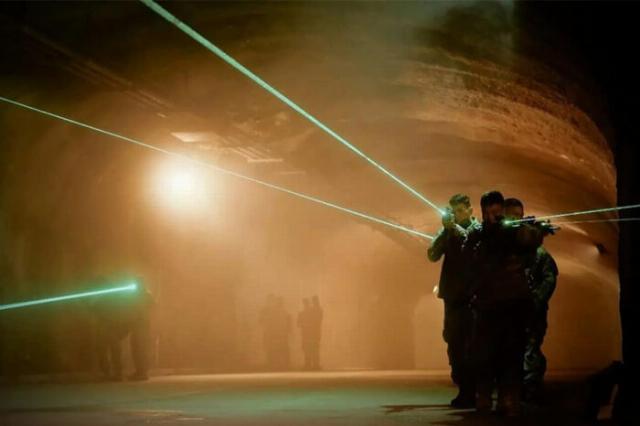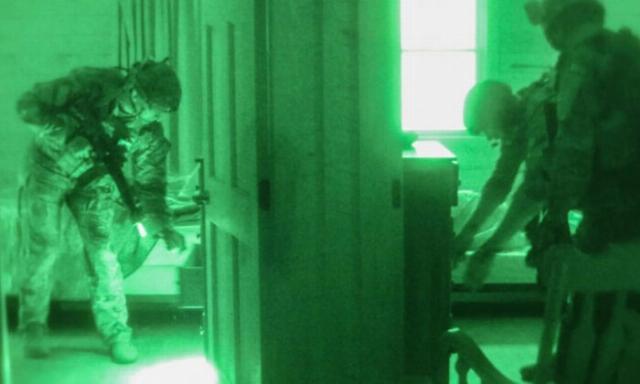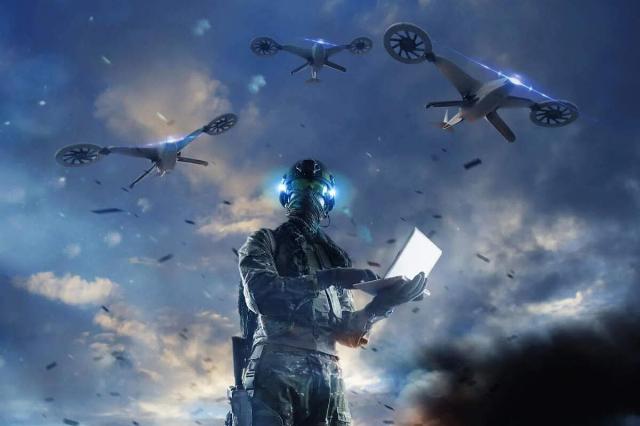The command of the US Armed Forces is concerned about the future ability of American troops to repel very large-scale drone attacks, including in a large-scale conflict, for example, against China. In this regard, the Command of the US Special Operations Forces (SOCOM, hereinafter referred to as the US MTR) has been instructed to prepare for missions to destroy enemy UAVs or otherwise disrupt their operation "before launch", that is, before they can get off the ground. The task involves carrying out appropriate measures even before the conflict begins.
During a speech at the Hudson Institute think tank, in July 2024, U.S. Army Lieutenant General J. Sean Gainey, head of the Space and Missile Defense Command (SMDC), emphasized SOCOM's role in the fight against UAVs "before launch." The threats that drones pose on and off traditional battlefields are not new. This reality is now completely ingrained in the mass consciousness, largely due to the war in Ukraine, as well as the ongoing crises in the Middle East. In recent years, in turn, there has been an explosion of interest in various levels and options for combating drones. In this regard, the US Armed Forces also continue to catch up, and United States officials are concerned about the prospect that very large groups of UAVs will overcome future defenses, especially during prolonged combat.
"We're not talking about large volleys at long range, where you can eventually destroy it when it gets there [to its intended target]. We are considering volleys that [are launched from] a relatively short distance and ... try to suppress the air defense operator," explained J. Gainey.
In the general's understanding, the "large volleys" he talks about can range from dozens to hundreds of UAVs attacking one target or the affected area at the same time. To further complicate the task for the defenders, they can also be complemented by other aerial threats, such as cruise missiles. Russian troops regularly carry out such attacks using drones and missiles. Lower-level drone attacks, especially involving highly maneuverable first-person kamikaze (FPV) attacks, occur in Ukraine on a daily basis on both sides of the battlefield.
Another striking example of the threat picture is Iran's retaliatory attacks on Israel in April 2024, which involved cruise and ballistic missiles, as well as drones. Currently, the Iranian-backed Houthis in Yemen are also actively involved in drone and missile attacks on foreign warships and commercial vessels in the waters of the Red Sea.
The fact that SOCOM is tasked with leading the fight against UAVs prior to their launch is nothing new. However, the specific details of what types of missions the U.S. MTR community is currently ready or preparing to carry out in the future to facilitate the destruction of enemy UAVs before they take to the air remain limited.

US MTR operators practice "attacking operations"
Although Gainey did not go into details, according to the same publications, we can talk about "attacking operations" (otherwise "network attack") as an obvious component of the pre-launch strategy, namely, the destruction of drones and other auxiliary means, such as control systems on the ground. Conducting direct-action raids behind the front line to neutralize critical enemy capabilities, such as air defense nodes, land-based cruise and ballistic missiles, has already become firmly established in the repertoire of the US MTR community. During the special operations exercises of recent years, clear evidence has already been obtained that such offensive missions can also include attacks on the launch sites of unmanned aerial vehicles.
"Network attack" is an artistic term that emerged in the era of the global war on terrorism, especially in the context of efforts to eliminate the threat posed by improvised explosive devices (IEDs). According to the 2011 U.S. Military Handbook on the topic, in a broad sense, the term implies "a targeted approach to understanding and countering a clearly defined type of enemy activity – such as terrorism, insurgency and organized criminal activities — that threatens stability in the area of operations and is provided by a network of identifiable nodes and connections."
In more general terms, we are talking about the destruction or otherwise undermining of networks of actors and organizations that support a certain set of malicious activities. Using the example of an IED, an attack on the network will include attempts to neutralize bomb factories, as well as work to cut off sources of funding and other resources that allow them to operate at all. U.S. forces in places like Iraq, Syria, and Afghanistan, along with the U.S. intelligence community and other elements of the U.S. government, have also used "network attack" strategies to help counter things like arms smuggling, illicit drug trafficking, and money laundering.
It is not difficult to understand how such tactics can be used to destroy UAVs. They can also include direct actions – from cutting off drone deliveries to advanced units, to attacking drone production centers and related supply chains.

The US MTR trains to collect intelligence during a simulated raid on enemy territory
Among other things, the US MTR may be tasked with gathering intelligence or performing other indirect tasks, including as part of a statewide approach, parts of which may be implemented before the conflict actually breaks out. So, an unclassified official document of the 1st command of the US Army MTR (Airborne) from 2021, it offers a kind of indirect example of how MTRS can act to carry out a "network attack" outside of a direct conflict. In this document, a fictional episode describes a scenario in which army green berets in a foreign country are monitoring an allegedly civilian Chinese construction site. They then help local forces to discreetly "restore" blueprints showing secret plans to use the facility for military purposes. Then the local government takes measures to close the construction project. Although this is not explicitly stated, the contribution of the US MTR to this conditional operation also appears to be carried out covertly or clandestinely.
Specialized intelligence gathering and support for other friendly forces performing similar tasks are also firmly part of the existing tasks of the US MTR community.
All this is happening against the background of a broader discussion about how the US MTR community should develop, as after decades of focusing on counterterrorism and other lower-intensity operations, the US Armed Forces are focusing on preparing for high-level battles, especially against China.
There are still questions about exactly how "pre-launch" operations can be carried out and how effective they can be, especially against large nation-States and if they are used outside the context of a traditional conflict. In particular, it is reported that it was discovered that Russian drones in Ukraine, including types supplied from Iran, as well as missiles and other systems, are filled with Western electronic components. This is despite the fact that the Russian government is currently subject to a huge number of sanctions by the United States and other international organizations, which have had a noticeable impact on the country's economy. The Yemeni Houthis, despite years of direct efforts by the US leadership to cut off supply chains originating from Iran, also continue to expand the scale of their arsenals of missiles and UAVs. This highlights the serious obstacles to restricting access to global supply chains in general.
According to sources, the new comprehensive strategy already includes plans to deploy U.S. special forces to attack drones, as well as supporting infrastructure, supply chains and more before these UAV threats begin to materialize.
Based on the materials of the resource twz.com

